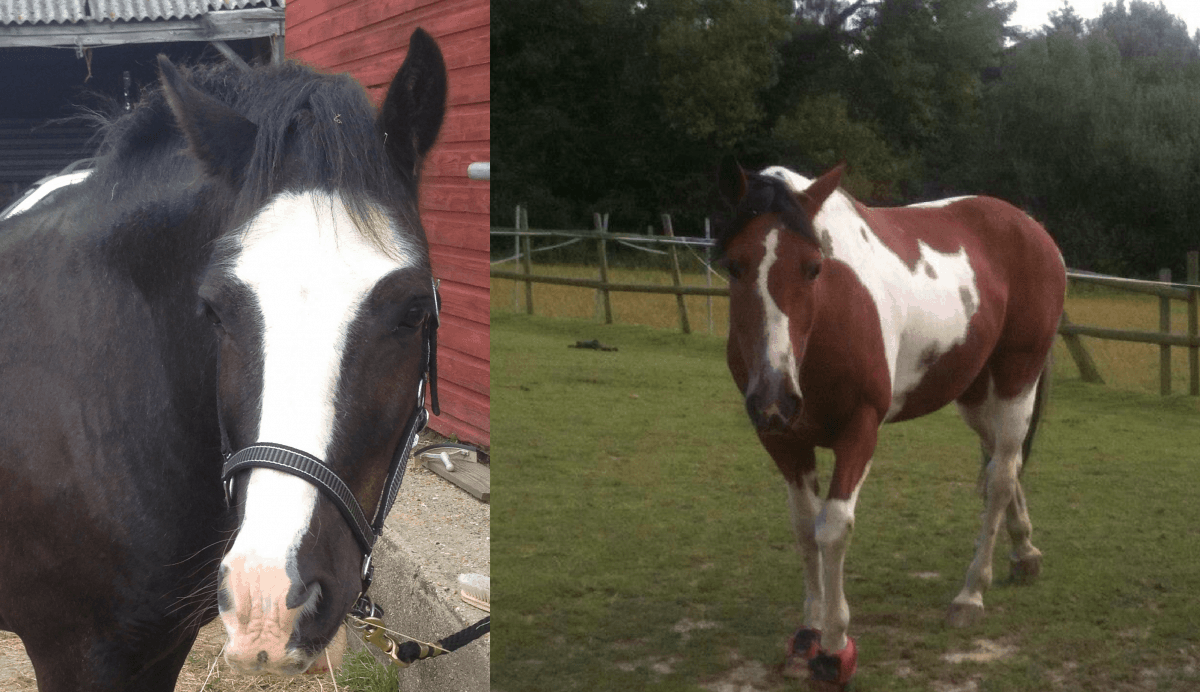Deadly disease: ‘His pain was beyond agonising’

Jade Kephalus from Essex lost her seven-year-old gelding to Equine Atypical Myopathy (EAM) this week. She spoke to H&C about the terrible loss of her pony…
Oliver’s story
“The night before we lost Oliver, he was his usual cheeky self. He’d been groomed and lunged, he’d been fed, he was happy and healthy. There was nothing to suggest that the next morning he’d be dead.
When we arrived at the yard the next day, both Oliver and his fieldmate Tommy were lying down in the field. We thought they were having a snooze, and when they were called they both got to their feet. But Oliver suddenly staggered and fell back down again, and that’s when we knew something was very wrong.
We managed to get him back up and we called the vet. While we waited, we started walking him around, thinking it was colic. But then we thought it would be so unlucky to have two horses with colic, it just didn’t fit. Nothing had changed, there would have been no reason for it, and neither of them were prone to colicking.
Then Oliver began pouring with sweat and really shaking. The vet arrived and they knew instantly what it was – Oliver had Equine Atypical Myopathy. There was nothing they could do for him.His pain was beyond agonising and he was really suffering. He couldn’t fight it. He had to be euthanised there and then, and we held him in our arms as he died.
Hospital
Oliver’s fieldmate Tommy was also showing signs of EAM, but we managed to keep him on his feet and get him on a trailer so that he could go to the veterinary hospital. He had to have strong medication to flush out his system, and it was a difficult battle for him, but I’m pleased to say he has pulled through.
It’s been so tough for Tommy’s owner Bridget though – her daughters had been riding Oliver for me so to lose him and have their other pony so very ill as been incredibly difficult.
A life cut short
Oliver first arrived at my yard when he was still a foal. His previous owner brought him there but didn’t come back, soI took him under my wing, even though back then I had two other horses of my own to look after. He’d had a bit of a rough start in life, he came from a common in Essex and had barely been touched by the time he came to me.
When it was time to start breaking him in, I was pregnant so he went out on loan for a few years. I’d not had him back for long but he was back in work and beginning his training again. We thought hehad excellent showing prospects, and could have gone far – he had such a pretty face and a lot of presence. We’d planned out his future, but now it’s been cut short.
I keep asking myself if that’s why he couldn’t fight the disease.Maybe it’s because he wasn’t as fit as Tommy, maybe it’s because he’s always been greedier – I think because of the start in life he had – and perhaps he ate more of the sycamore seeds.
He wasn’t just a horse, he was our baby, our cheeky little baby. Even at the end you could see his cheeky self, his fighting spirit.
Warning
I’d heard that eating sycamore seeds could be dangerous to horses, but I didn’t imagine it could have such a devastating effect.There are a few sycamore trees around Oliver’s field, but there’s been horses grazing in there for years and there’s never been any issues before.
Horse owners need to be aware of the problem, especially at this time of year. Know your horses so that you’re instantly aware if there’s any abnormal signs. Look out for the signs and symptoms of EAM, such as stiffness, or darker urine.
If you do have sycamores around be vigilant, and try to keep the horses away even if it means fencing the trees off. Rake up as many sycamore seeds as possible, and remember they can be blown considerable distances in the wind.
I’d love to have another horse again in the future but seeing what Oliver went through, I’d be petrified of going through it again. I’m still inconsolable after seeing him put to sleep and seeing Tommy in intensive care.
But I’m determined to get more people to be aware of this deadly disease. I couldn’t bear the thought of anyone else going through what we did.”






